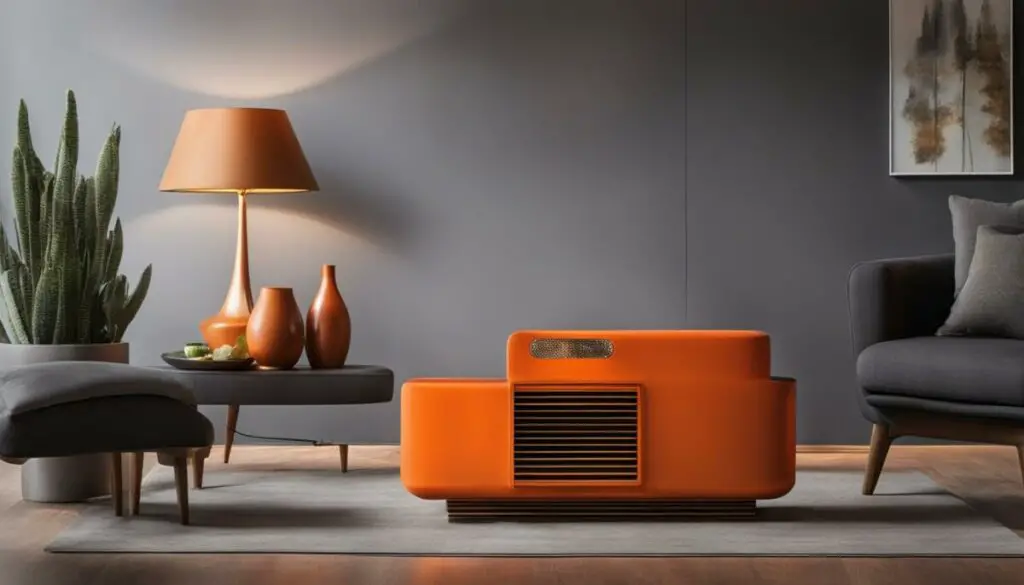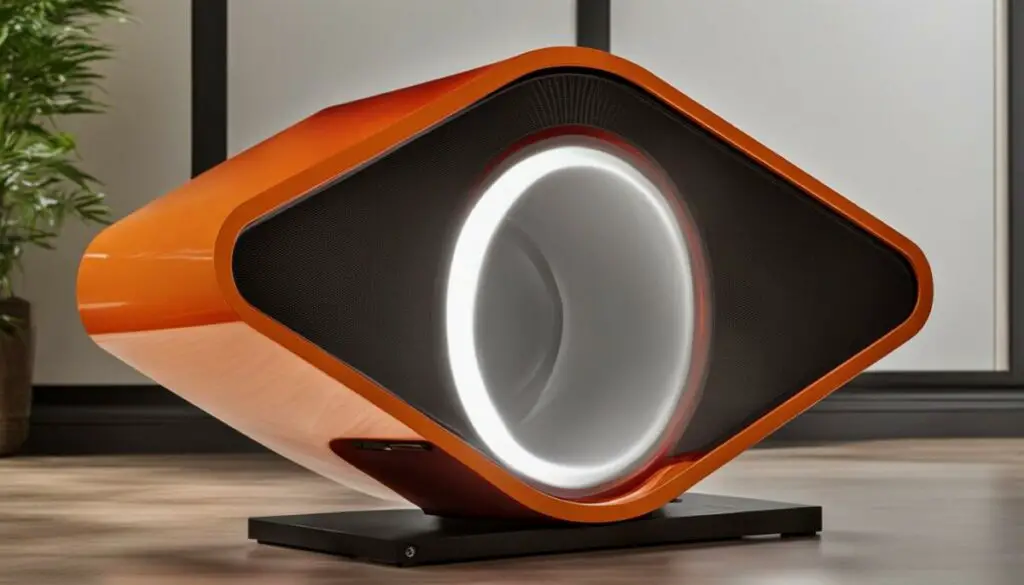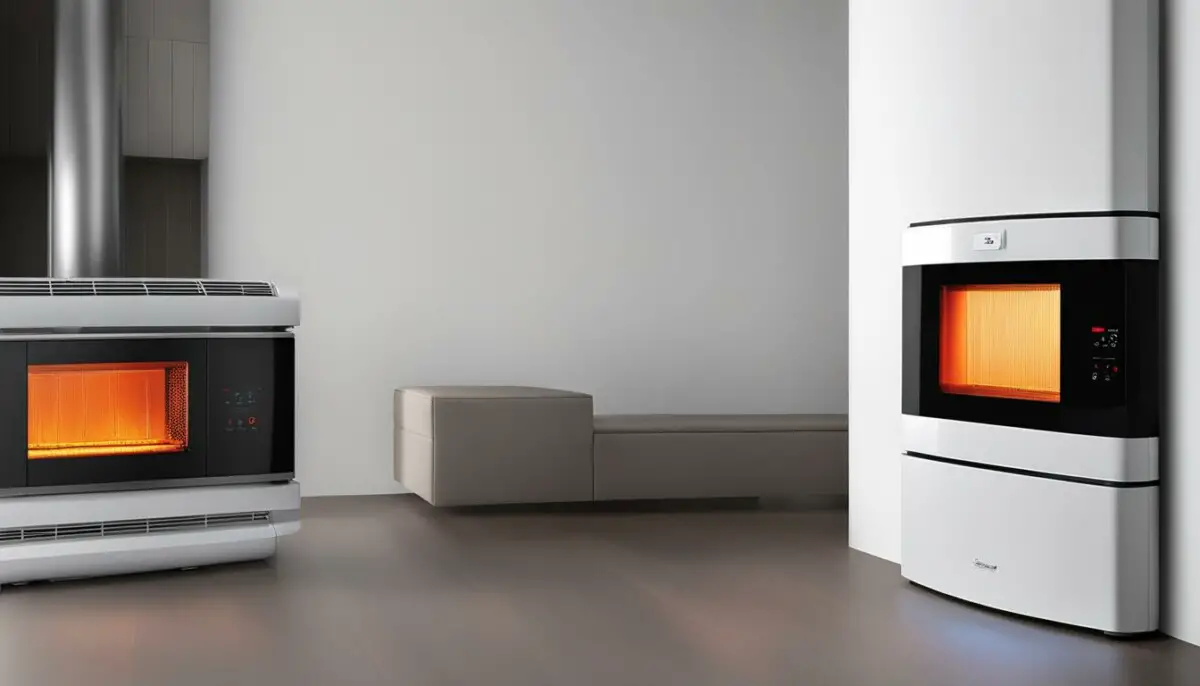Last Updated on 6 months by Francis
Are ceramic or infrared heaters better? This is a common question homeowners ask when considering a heating system that meets their needs. Both ceramic and infrared heaters have their own advantages, but which one is the right choice for you? In this article, we will compare ceramic and infrared heating systems and provide you with all the information you need to make an informed decision for your home.
When comparing ceramic and infrared heaters, several factors come into play, such as efficiency, safety, cost, heating performance, environmental impact, and durability. We’ll delve deep into each of these factors to compare and contrast the two heating systems.
Contents
Key Takeaways
- Choosing between ceramic and infrared heaters depends on your specific needs and preferences.
- Ceramic heaters offer advantages such as quick heating, cost-effectiveness, and safety features.
- Infrared heaters provide several benefits, including heat that feels like natural sunlight, energy efficiency, and portability.
- When comparing ceramic and infrared heaters, consider factors such as efficiency, safety, cost, heating performance, environmental impact, and durability.
- User reviews and recommendations can provide valuable insights when making a decision on the right heating system for your home.
Understanding Ceramic Heaters

If you’re in search of a practical heater for your home, ceramic heaters are a great option to consider. These heaters use ceramic plates to generate heat and then disperse it throughout the room. Here are some of the advantages of using a ceramic heater over other types of heaters:
- Energy efficient: Ceramic heaters consume less electricity than traditional heaters, making them cost-effective in the long run.
- Portable: They are lightweight and have compact designs, so you can easily move them around your home.
- Quiet operation: Ceramic heaters are often silent, which means you can use them in your bedroom or office without any disturbance.
- Safety features: Ceramic heaters come with several safety features, including overheating protection and tip-over switches.
- Quick heat up time: Ceramic heaters heat up quickly, which means you don’t have to wait long to feel the warmth.
One of the best things about ceramic heaters is their versatility. They come in a variety of sizes and shapes, making it easy to find one that suits your needs. Plus, they can be used as a primary source of heat or as a supplemental heater to provide extra warmth in specific areas of your home.
If you’re looking for an efficient, low-cost, and versatile heating option, ceramic heaters are an excellent choice. Their unique design and features make them perfect for any home.
Exploring Infrared Heaters

Infrared heaters utilize electromagnetic radiation to produce heat, making them a unique heating option. Unlike traditional heaters that warm the air, infrared heaters emit rays directly to objects and people in their path. This process is similar to how the sun’s rays warm the Earth, providing a natural and efficient way of heating.
The benefits of infrared heaters are numerous. For example, since they don’t rely on air circulation, they are less likely to circulate dust or allergens around the room, making them a great option for those with respiratory issues. Additionally, since they heat objects directly, they are ideal for outdoor or drafty indoor spaces where traditional heaters may not work as well.
The Benefits of Infrared Heaters
- Efficient: Infrared heaters are incredibly efficient as they don’t rely on air circulation to heat a room. This means they use less energy and can effectively warm up a space faster than other heaters.
- Cost-effective: Since they use less energy, infrared heaters can help you save on your energy bills in the long run.
- Provide even heat: Unlike traditional heaters that warm the air, infrared heaters heat objects directly, providing even heat throughout the room and eliminating cold spots.
- Safe: Infrared heaters are designed to be safe to use and have features such as overheat protection, tip-over switches, and cool-to-touch exteriors to prevent burns or other accidents.
- Good for the environment: Since they require less energy to operate, infrared heaters have a lower carbon footprint, making them a great option for those looking to reduce their environmental impact.
“Infrared heaters are an excellent choice for heating outdoor and poorly insulated spaces, providing even warmth without drying out the air.” – Home Improvement Experts
Overall, infrared heaters offer a unique and efficient way of heating your space, providing even heat, and offering a range of benefits that traditional heaters may not be able to match. If you’re looking for an eco-friendly and effective heating option, consider investing in an infrared heater.
Efficiency Comparison

One of the most important factors when it comes to choosing a heater is its efficiency. In this section, we will compare the efficiency of ceramic and infrared heaters to give you an idea of which option is more energy-efficient.
| Ceramic Heaters | Infrared Heaters | |
|---|---|---|
| Efficiency | Ceramic heaters are considered to be highly efficient, as they can quickly produce heat and distribute it evenly around a room. They work by heating a ceramic element, which then radiates heat into the air. | Infrared heaters are also highly efficient, as they use electromagnetic radiation to produce heat. They work by emitting infrared light, which is then absorbed by objects and surfaces in the room, causing them to release heat and warm up the room. |
| Heat Distribution | Ceramic heaters are designed to distribute heat evenly throughout the room, ensuring every corner of the space is warmed up. They use fans to blow hot air around the room, creating a comfortable and cozy environment. | Infrared heaters are not designed to distribute heat evenly around the room. Instead, they primarily heat the objects and surfaces closest to them. This means that if you’re sitting directly in front of the heater, you’ll feel warm and toasty, but the rest of the room may feel cooler. |
| Energy Consumption | Ceramic heaters are generally more energy-efficient than infrared heaters, as they use less electricity to produce the same amount of heat. They rely on convection heating, which means they can quickly warm up a room without using too much energy. | Infrared heaters consume more energy than ceramic heaters, as they use electromagnetic radiation to produce heat. However, they are still considered to be relatively energy-efficient compared to other types of heaters on the market. |
Based on the efficiency comparison above, it’s clear that both ceramic and infrared heaters have their advantages. While ceramic heaters provide more even distribution of heat and are more energy-efficient, infrared heaters can quickly warm up objects and surfaces closest to them.
Safety Features

When it comes to choosing a heater, safety is a top concern. Ceramic and infrared heaters offer different safety features that are important to consider.
| Ceramic heaters | Infrared heaters | |
|---|---|---|
| Tip-over protection | Ceramic heaters typically have tip-over protection, which automatically shuts off the heater if it is knocked over. | Infrared heaters do not typically have tip-over protection. |
| Overheating protection | Ceramic heaters come with overheat protection, which turns off the heater if it gets too hot. | Infrared heaters also have overheating protection. |
| Burn hazards | Ceramic heaters have hot surfaces that can cause burns if touched, but most models have cool-touch exteriors to prevent this. | Infrared heaters produce heat through electromagnetic radiation and do not have hot surfaces that can cause burns. |
| Fumes and ventilation | Ceramic heaters do not produce any fumes, making them safe to use without ventilation. | Infrared heaters do not produce any fumes, making them safe to use without ventilation. |
In summary, both ceramic and infrared heaters have safety features that make them safe to use in your home. Ceramic heaters have tip-over protection, overheating protection, and cool-touch exteriors, while infrared heaters do not have hot surfaces that can cause burns.
Whichever option you choose, be sure to read the manufacturer’s safety guidelines and use the heater according to their instructions.
Cost Analysis

When it comes to choosing between ceramic and infrared heaters, cost is an important factor to consider. While ceramic heaters are generally more affordable, they can be less energy-efficient than infrared heaters, which can result in higher electricity costs over time.
On the other hand, infrared heaters tend to be more expensive upfront, but they are designed to use less energy compared to ceramic heaters. This means that while the initial cost may be higher, the long-term savings on electricity bills can be significant.
| Ceramic heaters | Infrared heaters | |
|---|---|---|
| Initial cost | Less expensive | More expensive |
| Energy efficiency | Less energy-efficient | More energy-efficient |
| Long-term cost | Higher electricity bills | Lower electricity bills |
When deciding between ceramic and infrared heaters, it’s important to consider your budget and long-term cost savings. If you’re looking for a more affordable option upfront, ceramic heaters may be the way to go. However, if you’re willing to make a larger investment upfront for greater long-term savings, an infrared heater may be the better choice.
Heating Performance Comparison

When looking at ceramic vs. infrared heaters, one of the most important factors to consider is their heating performance. In this section, we will compare the two options to give you a clear idea of which one provides better warmth for your home.
Ceramic Heaters
Ceramic heaters are known for their ability to warm up a room quickly and efficiently. They work by using an internal heating element to warm up air, which is then blown out by a fan. This process allows them to heat up a space in a matter of minutes.
One advantage of ceramic heaters is that they distribute heat evenly throughout a room, making them a great option for larger spaces. They also feature adjustable thermostats, allowing you to control the temperature and save on energy costs.
Infrared Heaters
Infrared heaters use electromagnetic radiation to produce heat, making them a unique and efficient heating option. They work by emitting infrared rays that heat up objects in a room, rather than the air itself.
The advantage of infrared heaters is that they provide direct heat to the objects in a room, making them more efficient at warming up small spaces. They also produce less noise than ceramic heaters, making them a better option for bedrooms or workspaces.
Comparison
| Ceramic Heaters | Infrared Heaters | |
|---|---|---|
| Heating Time | Quick | Slow |
| Heating Range | Large spaces | Small spaces |
| Noise Level | Moderate | Low |
| Direct Heat | No | Yes |
As you can see, both ceramic and infrared heaters have their advantages and disadvantages when it comes to heating performance. Ceramic heaters are better suited for larger spaces, while infrared heaters are more efficient at warming up small areas directly. Consider the size and layout of the room before choosing which type of heater to use.
Environmental Impact

When it comes to the environmental impact of home heating, both ceramic and infrared heaters have their pros and cons.
Ceramic heaters are generally considered to be more eco-friendly as they operate using convection heating. This means that the air is heated, circulates around the room, and warms up objects, creating a uniform temperature without emitting any harmful gases or particles into the air.
Infrared heaters, on the other hand, use electromagnetic radiation to produce heat. While they are energy-efficient and provide targeted warmth, they emit some level of radiation that can be harmful to human health if used improperly.
In terms of energy consumption, both ceramic and infrared heaters are efficient, as they convert most of the energy into heat. However, some ceramic heaters feature additional energy-saving modes that help reduce energy consumption even further.
When it comes to disposal, ceramic heaters are easier to recycle as they are made of 100% recyclable materials. Infrared heaters, on the other hand, often feature electronic components that require proper disposal to avoid the release of toxic chemicals.
Durability and Lifespan
When investing in a heater for your home, it’s essential to consider the durability and lifespan of the product. Ceramic and infrared heaters are both designed to provide long-lasting warmth, but they differ in their construction and materials.
Ceramic heaters have a sturdy design and are known for their durability. Most ceramic heaters can last for up to five years or more with proper maintenance, including regular cleaning and replacing the filter. These heaters are built to last, with many manufacturers offering warranties on their products to ensure customer satisfaction.
In contrast, infrared heaters are often made with fragile materials like quartz or tungsten, making them more susceptible to breakage. However, most infrared heaters come equipped with safety features such as tip-over and overheat protection to prevent accidents that may damage the product. With proper care and maintenance, infrared heaters can last for up to three years.
While ceramic heaters have a longer lifespan than infrared heaters, it’s crucial to remember that the durability and longevity of these devices will depend on how well they are taken care of. Regular cleaning, filter replacements, and following manufacturer instructions can prolong the lifespan of your heaters and help you receive the maximum value for your investment.
Table: Comparing Durability and Lifespan of Ceramic and Infrared Heaters
| Heater Type | Durability | Lifespan |
|---|---|---|
| Ceramic Heaters | Durable | Up to 5 years or more with proper maintenance |
| Infrared Heaters | Fragile | Up to 3 years with proper care and maintenance |
In conclusion, ceramic heaters have a longer lifespan than infrared heaters due to their sturdy design and durable materials. However, proper care and maintenance are crucial for the longevity of both types of heaters.
User Reviews and Recommendations
When it comes to choosing the best heater for your home, user reviews and recommendations can provide valuable insights. We’ve scoured the web and compiled a list of what people are saying about ceramic and infrared heaters.
Ceramic Heaters
- “I’ve been using a ceramic heater in my bedroom for two years now, and it’s still going strong. The heat is consistent and it doesn’t make any noise. Highly recommend!”
- “I purchased a small ceramic heater for my office, and it’s been a game changer. It heats up my space quickly and doesn’t take up much room. Plus, it has multiple heat settings so I can adjust it depending on the temperature.”
- “I have a ceramic heater in my living room and it’s great for supplementing my central heating system. It’s energy-efficient and has a thermostat so I can set the desired temperature.”
Infrared Heaters
- “I was hesitant to try an infrared heater, but I’m so glad I did. It’s perfect for my drafty basement and heats up the space quickly. Plus, it doesn’t dry out the air like other heaters.”
- “I bought an infrared heater for my garage and it’s been a lifesaver during the winter. It’s energy-efficient and has a timer so I can set it to turn off after a certain amount of time.”
- “I use an infrared heater in my bedroom and it’s amazing. It heats up quickly and doesn’t make any noise. Plus, it’s lightweight so I can move it around if I need to.”
Ultimately, whether you choose a ceramic or infrared heater, it’s important to consider your specific heating needs and preferences. Both options have their advantages and drawbacks, and reading user reviews can help you make an informed decision.
Conclusion
After weighing the pros and cons of ceramic and infrared heaters, we hope you have a better understanding of which option is right for you. Ultimately, the best heater for your home depends on your unique needs and preferences.
Heating Options
When it comes to heating options, ceramic and infrared heaters are two of the most popular choices. Ceramic heaters offer fast and efficient heating, while infrared heaters provide targeted and gentle warmth.
Advantages of Ceramic Heaters
Ceramic heaters are a great option for those who want a fast and powerful heat source. They are energy-efficient, easy to use, and often come with a variety of safety features.
Benefits of Infrared Heaters
Infrared heaters are a unique option that uses electromagnetic radiation to provide heat. They offer targeted and gentle warmth, making them ideal for those who want to avoid dry air and keep their skin moisturized.
Compare Ceramic and Infrared Heaters
When comparing ceramic and infrared heaters, there are several factors to consider. Efficiency, safety, cost, heating performance, environmental impact, and durability all play a role in determining which option is best for your home.
Best Heaters for Home
Ultimately, the best heaters for your home will depend on your unique needs and preferences. If efficiency and speed are your top priorities, then ceramic heaters are a great choice. If you’re looking for gentle and targeted warmth, then infrared heaters may be the better option. We recommend considering all the factors mentioned in this article to make an informed decision.
Thank you for reading and we hope this article has helped you in your search for the perfect home heating solution.
FAQ
What is the difference between ceramic and infrared heaters?
Ceramic heaters use ceramic heating elements to provide warmth, while infrared heaters utilize electromagnetic radiation for heat production.
Which type of heater is more efficient?
The efficiency of ceramic and infrared heaters depends on various factors, such as room size and insulation. It is recommended to compare specific models to determine their individual efficiency.
Are ceramic and infrared heaters safe to use?
Both ceramic and infrared heaters are designed with safety features to prevent accidents. However, it is important to follow the manufacturer’s instructions and take necessary precautions when using any type of heater.
How do ceramic heaters work?
Ceramic heaters generate heat by passing electricity through heating elements made of ceramic material. The heat is then dispersed into the room through a fan or natural convection.
Do infrared heaters produce any harmful radiation?
Infrared heaters emit a type of electromagnetic radiation called infrared radiation, which is not harmful to humans. The radiation is absorbed by objects and people in the room, providing direct warmth.
Which type of heater is more cost-effective?
The cost-effectiveness of ceramic and infrared heaters depends on factors such as energy consumption, initial purchase cost, and maintenance expenses. Evaluating these factors in relation to your specific heating needs can help determine the most cost-effective option.
Which type of heater provides better heating performance?
The heating performance of ceramic and infrared heaters can vary based on factors such as room size and insulation. It is recommended to compare specific models and their heating capabilities to determine which option suits your requirements better.
Are ceramic and infrared heaters environmentally friendly?
Both ceramic and infrared heaters are considered more eco-friendly than traditional heating options due to their energy-efficient operation. However, ceramic heaters are often considered more environmentally friendly as they do not emit any direct radiation.
How long can I expect ceramic and infrared heaters to last?
The lifespan of ceramic and infrared heaters can vary depending on their quality, usage, and maintenance. Generally, with proper care, both types of heaters can last for several years.
What do users recommend between ceramic and infrared heaters?
User recommendations for ceramic and infrared heaters can vary based on personal experiences and preferences. It is advisable to read user reviews and consider individual needs before making a decision.
What conclusions can be drawn from comparing ceramic and infrared heaters?
After considering various factors such as efficiency, safety, cost, heating performance, environmental impact, durability, and user reviews, you can determine which type of heater, ceramic or infrared, is better suited for your specific home heating needs.


.jpg)






